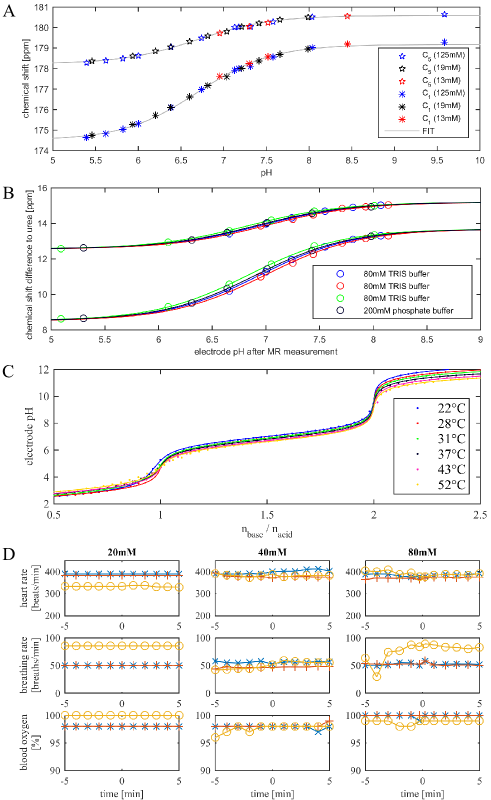A new 13C-labeled biosensor for hyperpolarized magnetic resonance spectroscopic imaging of pH in vivo
- 1. Technische Universität München, Department of Chemistry, Garching, Germany
- 2. Technische Universität München, Department of Nuclear Medicine, München, Germany
- 3. Technische Universität München, Institute of Medical Engineering, Garching, Germany
Aims
Pathologies which overrule natural pH regulatory mechanisms, in particular tumors, inflammation and ischemia, trigger local pH changes in the human body [1]. Preclinical and clinical applications both for diagnostics as well as therapeutical purposes could be realized by a spatially resolved and non-invasive method for the measurement of local pH. Several pH-sensitive molecules have been introduced for different nuclei (1H, 19F or 31P) [2] based on various mechanisms (e.g. chemical exchange saturation transfer or hyperpolarized 13C-bicarbonate [3]). However, none of these methods has yet been translatable to the clinic. Here, we present a new 13C-labeled pH biosensor for pH measurements based on MR spectroscopic imaging of pH sensitive 13C chemical shifts. The molecule is an endogenous, non-toxic compound, also used as a flavoring compound in the food industry.
Methods
The 13C-labeled pH biosensor molecule was produced in a one-step synthesis, purified using reversed phase HPLC and freeze dried. The pH biosensor was hyperpolarized alone or copolarized together with 13C-urea in nitrogen frozen layers in a HyperSense, before being dissolved to a concentration of 50mM and a normal blood pH≈7.4 in D2O, NaOD and EDTA or TRIS. Experiments were performed on a 7T small animal MRSI scanner using chemical shift imaging with FOV=6cm, matrix size=16x16, TR=118ms, slice thickness=5mm, FA=3°.
Results
The pH dependent changes in chemical shift are independent of the concentration of the biosensor (Fig. 1A). Hyperpolarized calibration curves are reproducible; the variability of several measurements with the same buffer is small and in the same range as the variability between different buffers (Fig. 1B). The pH biosensor shows a very weak temperature dependence of the relevant acid dissociation constant ΔpKa/ΔT≈-0.015±0.005pH/°C (Fig. 1C). A dose escalation study testing for in-vivo toxicity in three rats shows no abnormalities with respect to the injection of the pH biosensor (Fig. 1D).

Conclusion
Our new 13C-labeled pH biosensor represents a non-toxic, concentration, buffer and temperature independent pH reporter, showing great promise for clinical translation. Its large pH-sensitive chemical shift, evoked by rapid proton dynamics, is unique and independent of enzyme kinetics, and advantageous for fast measurements based on hyperpolarized nuclei.
Acknowledgements
EU Grant No. 294582 (MUMI), BMBF (FKZ 13EZ1114), DFG (SFB 824).
- [1] R. A. Gatenby, R. J. Gillies, (2004), Why do cancers have high aerobic glycolysis?, Nat Rev Cancer 4, 892
- [2] R. J. Gillies, N. Raghunand, M. L. Garcia-Martin, R. A. Gatenby, (2004), pH imaging. A review of pH measurement methods and applications in cancers, IEEE Eng Med Biol Mag 23, 57
- [3] F. A. Gallagher, M. I. Kettunen, S. E. Day, D. E. Hu, J. H. Ardenkjaer-Larsen, R. Zandt, P. R. Jensen, M. Karlsson, K. Golman, M. H. Lerche, K. M. Brindle, (2008), Magnetic resonance imaging of pH in vivo using hyperpolarized 13C-labelled bicarbonate, Nature 453, 940
